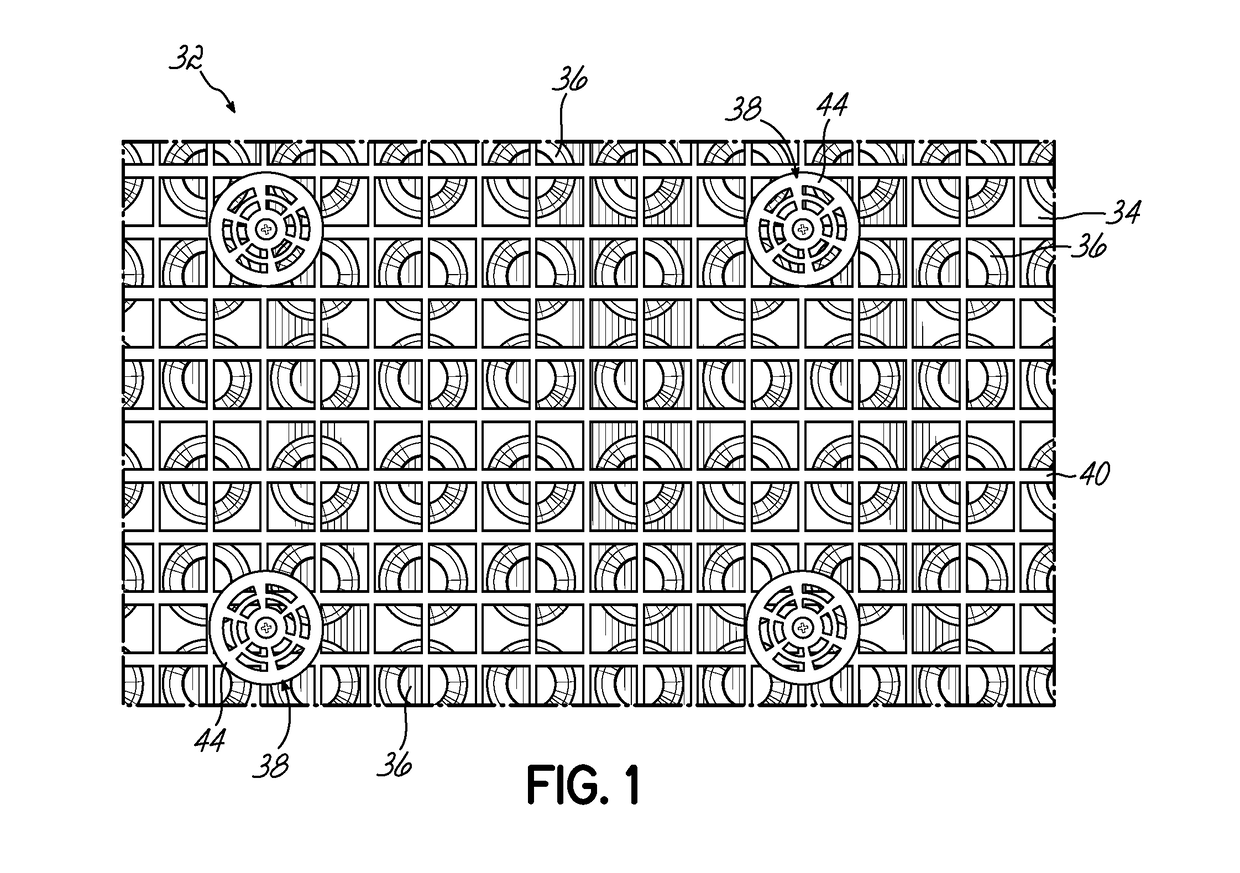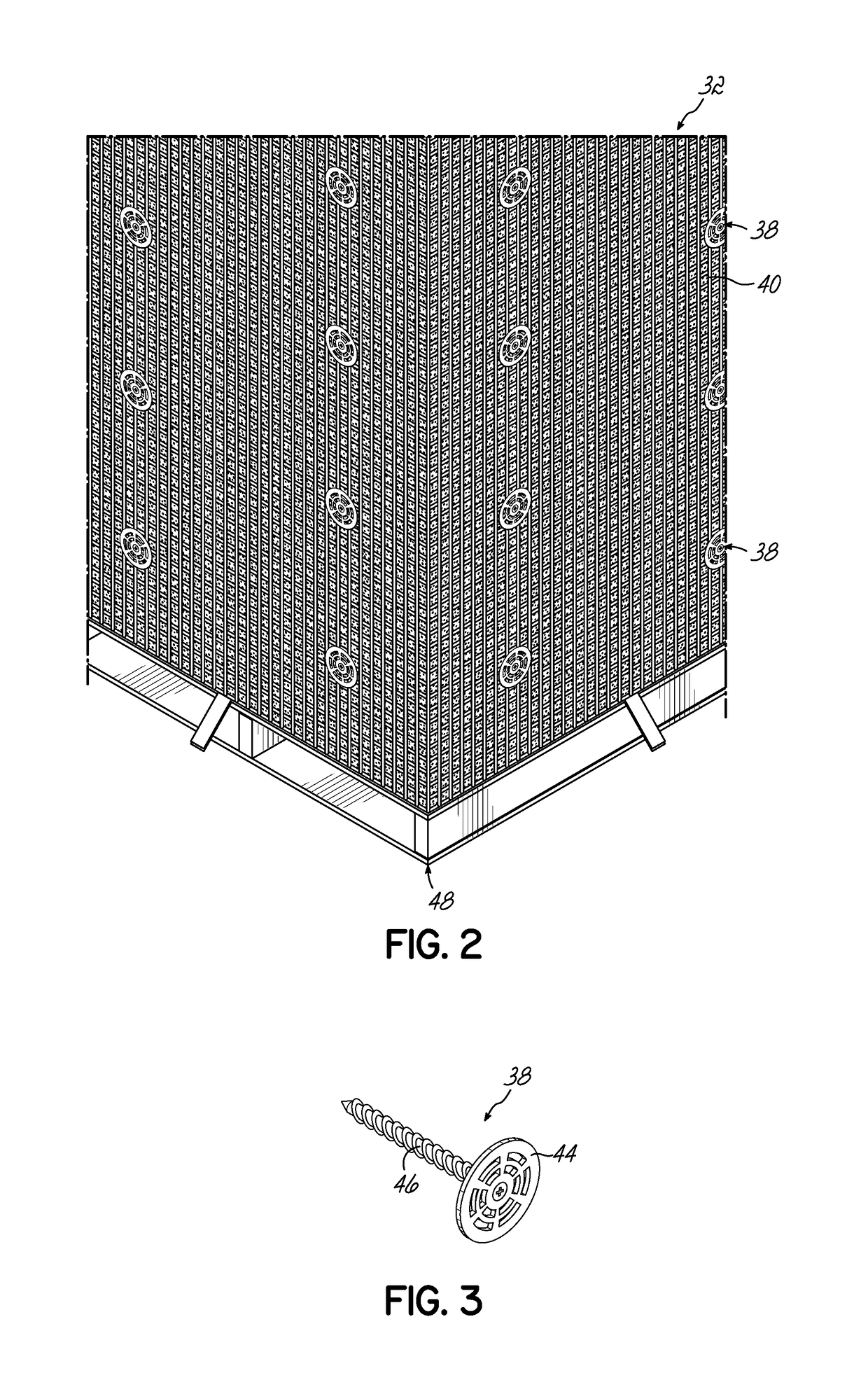Laminated air circulation board
- Summary
- Abstract
- Description
- Claims
- Application Information
AI Technical Summary
Benefits of technology
Problems solved by technology
Method used
Image
Examples
Embodiment Construction
[0019]One embodiment of this invention is used in a cavity wall 10 construction environment. As shown in U.S. Pat. No. 7,421,826, which is hereby incorporated by reference in its entirety, brick veneer / cavity walls 10 are made with inner and outer walls 12, 14. The inner wall 12 is typically constructed from CME, wood or steel studs 16 with an interior surface of drywall or the like. The outer face of the inner wall 12 typically includes a layer of sheathing 18 such as plywood, particle board or the like, that is nailed to the studs 16. Commonly, a weather resistant or air barrier material 20 covers the sheathing material 18 to limit moisture from progressing through the inner wall 12. The outer wall 14 is generally constructed of masonry materials 22, such as bricks, stone or the like, that are held together by mortar 24. Common practice in many municipal building codes requires a space of at least ⅜ to one inch forming a cavity 26 between the inner and outer walls 12, 14. The reas...
PUM
 Login to View More
Login to View More Abstract
Description
Claims
Application Information
 Login to View More
Login to View More - R&D
- Intellectual Property
- Life Sciences
- Materials
- Tech Scout
- Unparalleled Data Quality
- Higher Quality Content
- 60% Fewer Hallucinations
Browse by: Latest US Patents, China's latest patents, Technical Efficacy Thesaurus, Application Domain, Technology Topic, Popular Technical Reports.
© 2025 PatSnap. All rights reserved.Legal|Privacy policy|Modern Slavery Act Transparency Statement|Sitemap|About US| Contact US: help@patsnap.com



